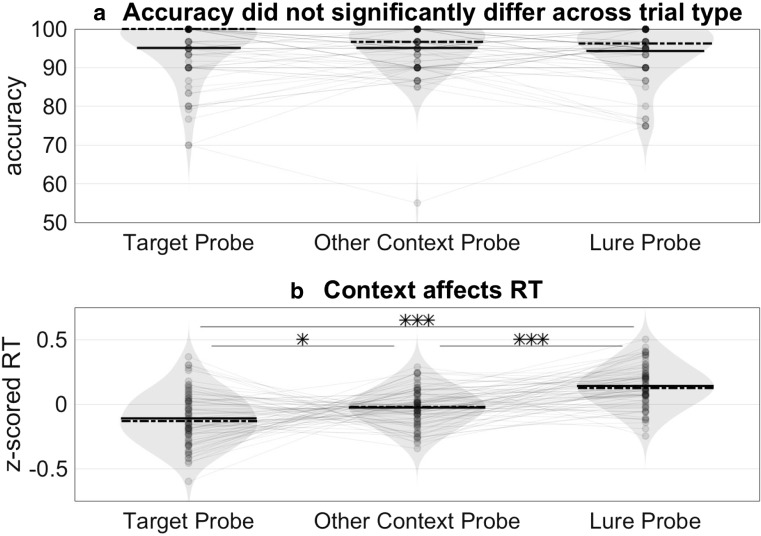Fig. 4.
Study 2 results: Response times reflect influence of study context. a For participants with above-chance performance (n = 80), accuracy was high across all three conditions (mean = 94.84%, SEM = .78%) with no difference in accuracy between target (mean = 95.01%, SD = 7.37%), other-context (mean = 95.10%, SD = 6.59%), or lure trials (mean = 94.31%, SD = 6.94%, p > .2 by paired, two-sided t tests for all pairwise comparisons). Solid lines reflect mean accuracy. Dashed lines reflect median accuracy. b RTs were log-transformed and z-scored within subject to control for individual differences in mean RTs and nonnormal RT distributions. Task-irrelevant context information slowed RTs; using paired, two-sided t tests, we found that participants responded slower to lure probes (mean zRT = .14, SD = .16) than to target probes (mean zRT = −0.11, SD = .20), t(79) = −6.7603, p < .001, or other-context probes (mean zRT = −0.03, SD = .14), t(79) = −6.8583, p < .001. *p < .05, ***p < .001

